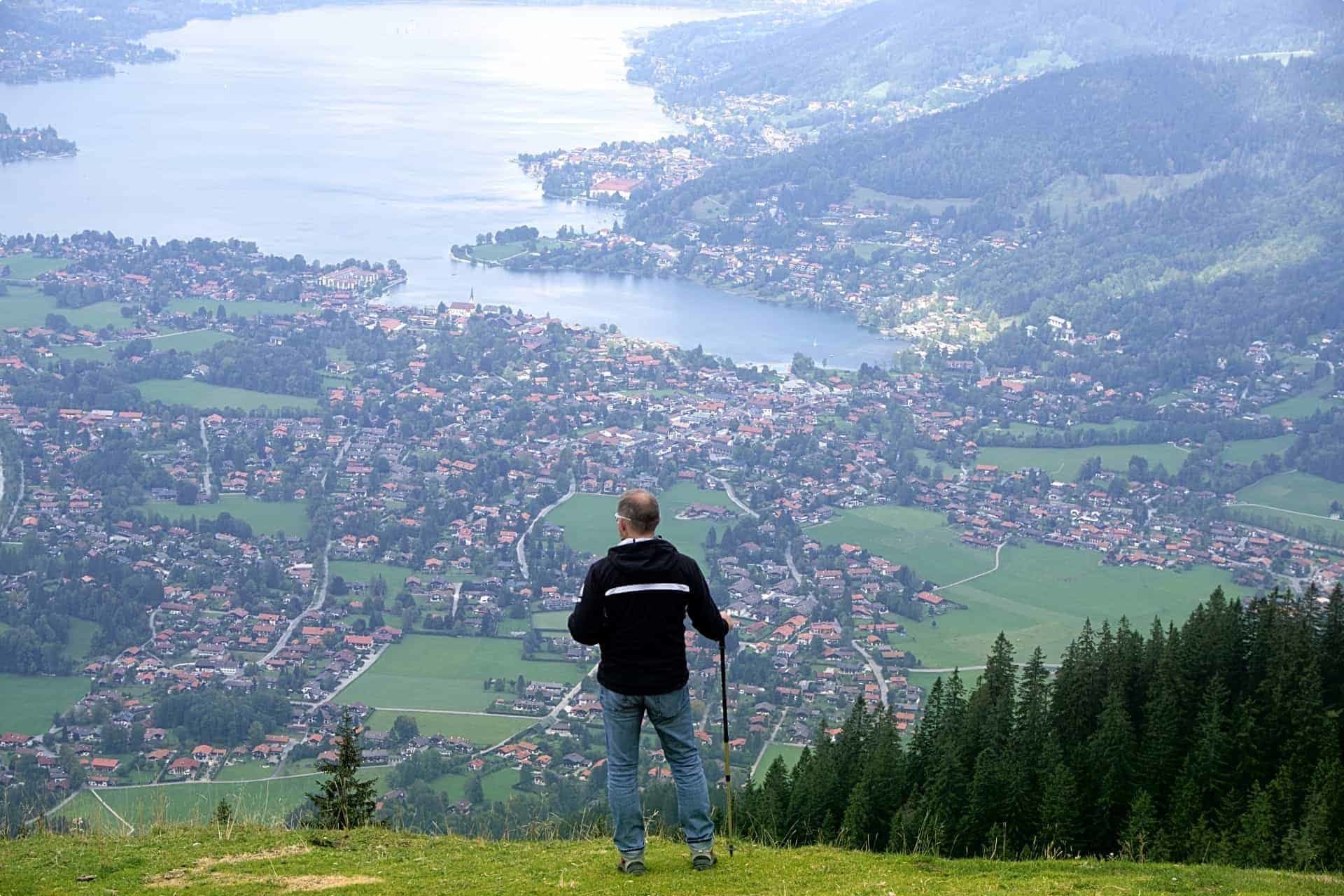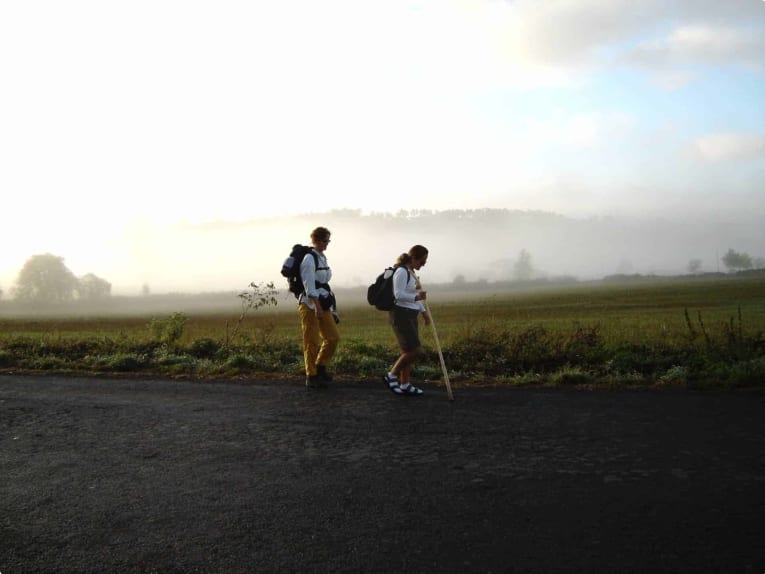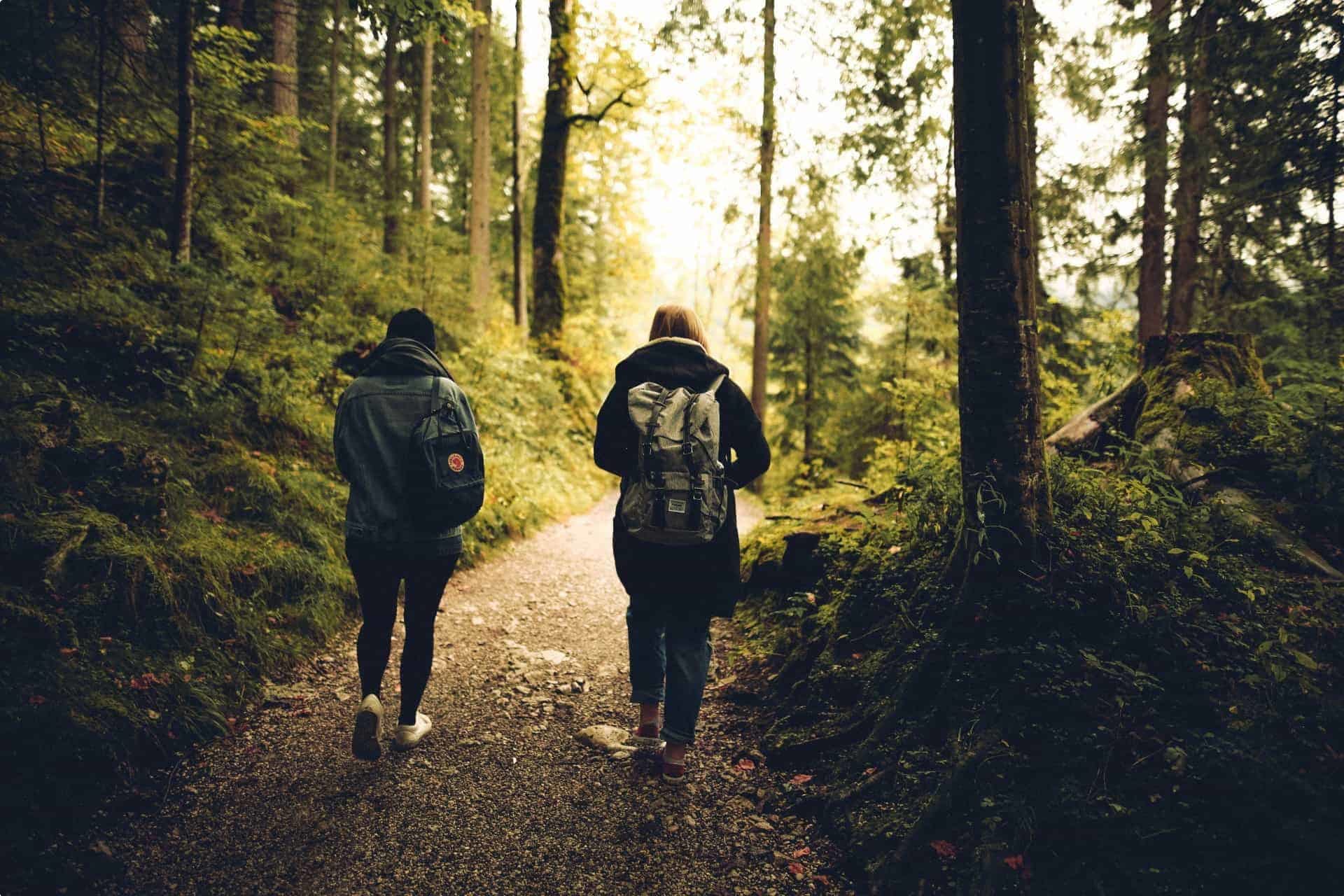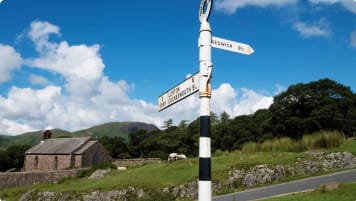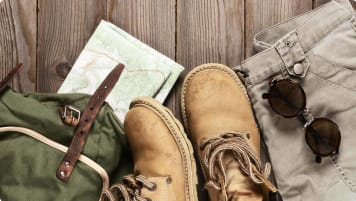Preparing for a walking holiday or tour?
How to Prepare for a Walking Holiday – 10 Tips It’s hard to beat the pleasure of a walking tour. While the comfort and speed of a coach or train has its place, exploring a…
20 Jul 21 · 8 mins read
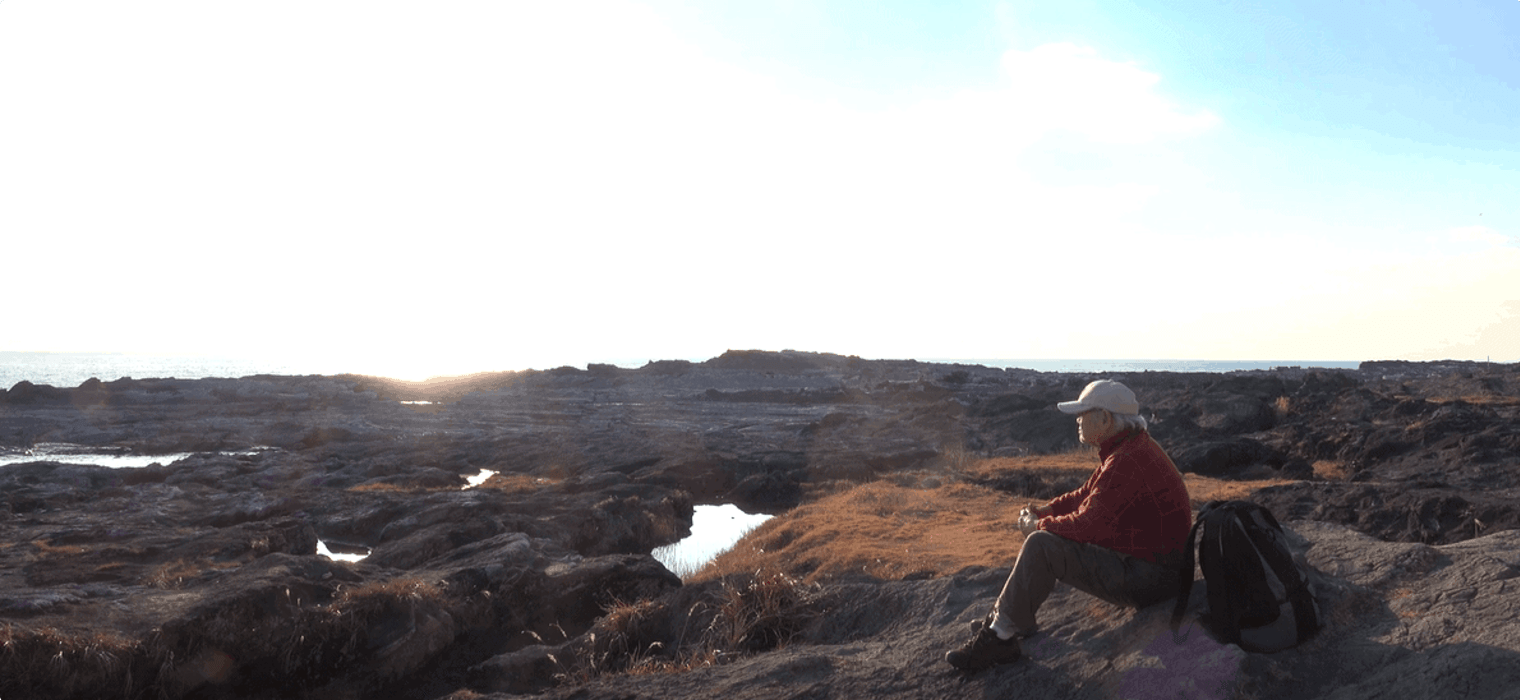
How to Prepare for a Walking Holiday – 10 Tips
It’s hard to beat the pleasure of a walking tour. While the comfort and speed of a coach or train has its place, exploring a new place on foot means that, wherever you go, you will properly discover the sights, sounds, and smells. Individual moments will be more memorable, there’ll be time to appreciate the beauty of both nature and You will also likely find yourself chatting with companions.
Odyssey Traveller offers a number of small group European walking tours that appeal to a range of fitness levels.
Please note: For those planning an advanced walk, especially a walk that includes difficult terrain or does not follow a path, or includes long stretches any preparation should be significantly more rigorous than that described here. Always do plenty of research into the walking track you’ll be following before embarking, and make sure that you’re prepared for anything that nature or your body is likely to throw at you. What follows is just a rough guide, describing some things to consider before taking a small group walking tour.
1. Footwear
A good pair of shoes can make all the difference between a wonderful walk and a difficult walk. Don’t be afraid to spend a few hundred dollars on getting it right (Merrell shoes are often worn by campers and walkers, and the brand stocks a number of varieties) . Make sure they fit just right, and that you’ve . Particularly, a hefty pair of boots may cause blisters for a week or two before they’re properly worn in.
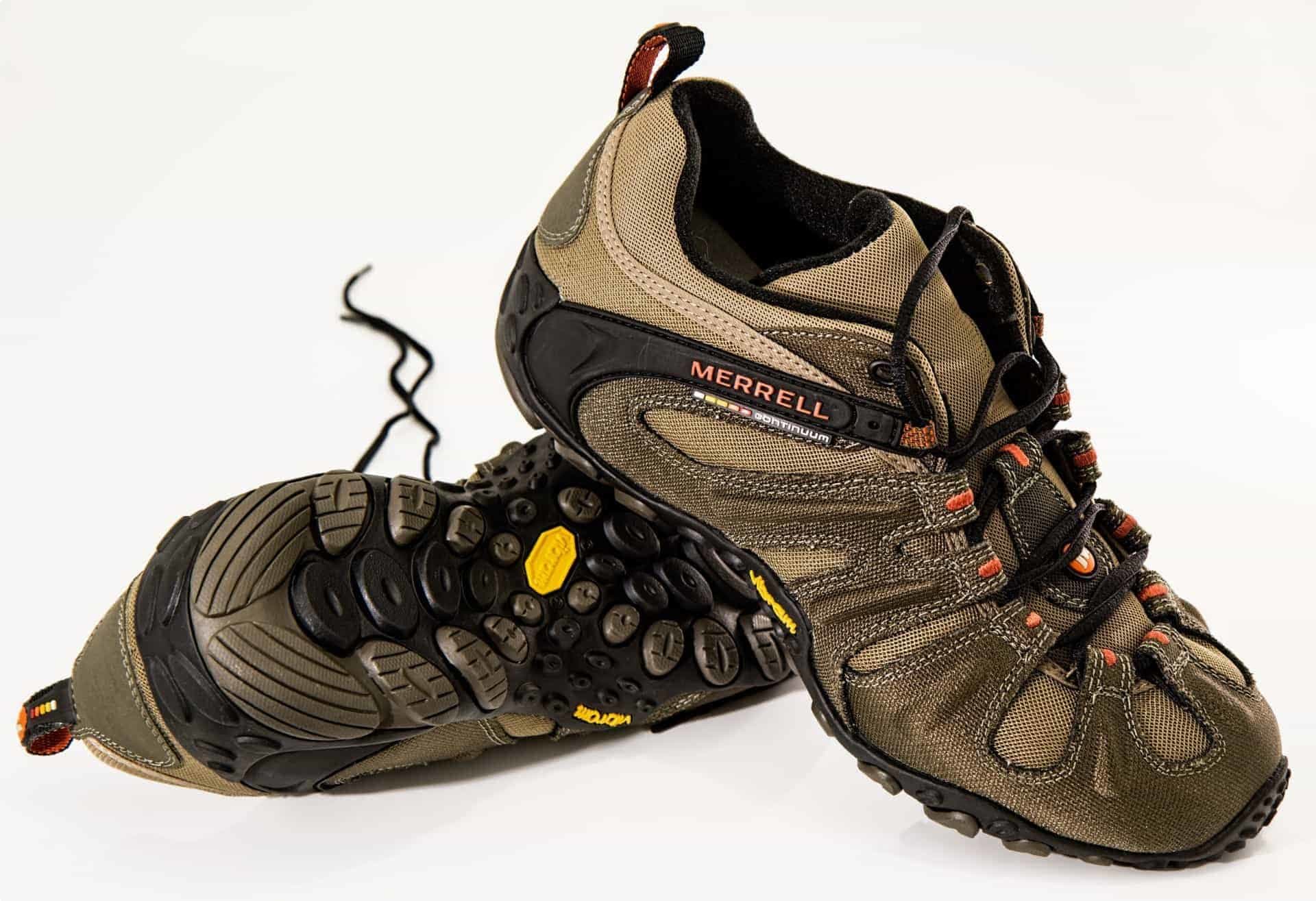 In addition, it’s worth picking up a few pairs of new, comfortable socks. Remember, if you’re wearing thick socks (such as explorer socks), make sure that your have the room to allow for that!
In addition, it’s worth picking up a few pairs of new, comfortable socks. Remember, if you’re wearing thick socks (such as explorer socks), make sure that your have the room to allow for that!
2. Hat & Sunscreen
No matter where you’re walking, it’s unlikely that you’ll be shaded or being rained on the whole time, so a wide-brimmed hat and sunscreen are necessary accessories. Make sure you have enough sunscreen to last for the duration of the trip. And don’t forget sunglasses!
3. Write things down
When you’re walking, there, even when you’re with companions, there’ll likely be long periods of silence and thoughtfulness. Take this as an opportunity to absorb your surroundings, and spend some time letting your mind wander. Taking a notebook or journal can really help clarify your thinking, and record the little details of the trip that you might otherwise forget when it’s all over. Write thoughts down as you’re wandering along, or take some time in the evening to recollect your experiences from the day. Remember to bring along more than one pen!
4. Prepare for unexpected weather
Wearing layered clothing and having a waterproof pack and jacket may not always seem essential, especially given that the weight you are able to carry when walking is often limited. However, nothing can ruin a walk like having all your belongings soaked, or a cold wind picking up and cutting right through your shirt. So, light, insulating and waterproof gear is always worth investing in.
5. Eating & Drinking
Never forget to take a decent, large water bottle on a walk. Hydration is perhaps the most important thing when walking, to keep up your energy, and stay healthy. The amount of water you take depends on the climate, the exertion required, and how much water you tend to require. So do plenty of research beforehand to make sure you’re not left with all the water gone halfway through the day!
Also, you’ll definitely want to bring along some snacks to keep up your energy. While there’s always a place for chocolate and lollies, make sure you bring something healthy that will keep your energy up throughout the day.
6. Fitness Preparation
If you’re going for a long walking holiday, its worthwhile committing to a fitness training regime in the lead up to your departure. The exact nature of the schedule will depend on the length and difficulty of the walk and your current level of fitness, but there are plenty of places online where you can develop a regimen to suit your requirements. Given that you’ll be walking, and not running (and as long as you’re not climbing rough terrain), this will no doubt mean going for long walks, which is a commendable activity regardless of whether you’re preparing for a tour or not. Another option for preparation are calisthenics (bodyweight) exercises, these can be done from the comfort of your own home, and when combined with stretching and balancing are a great way to build your fitness level, as well as your bodily control.
7. Pack Light
Don’t wait until the first day of your vacation to test out what it feels like to walk with your pack on your back. Remember, the pack mustn’t just be tolerable, but fairly easy to carry. If you’re carrying too much weight, or the straps don’t hang correctly, you could find yourself having difficulty on the walk, or creating (or exacerbating) back problems for yourself. Only bring essentials. However, also keep in mind that you’ll be drinking water and eating any food you bring, so as your day goes on your pack should lighten.
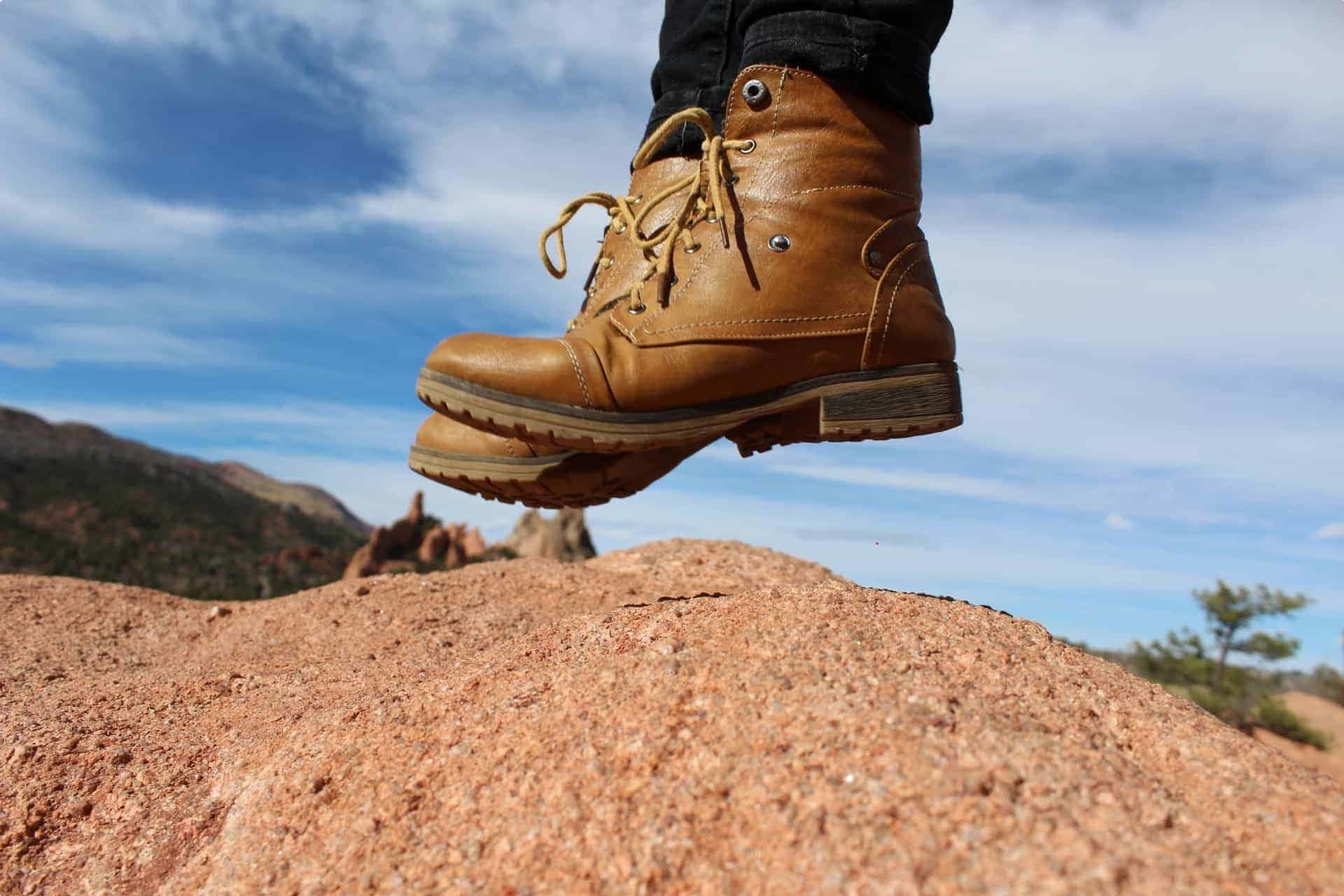
On an Odyssey Traveller small group walking tour, any larger luggage will be carried form point to point by a third party, so make sure you bring a day pack to carry the everyday essentials you’ll need on the trail.
8. General Health Checkup
This advice goes for any extended holiday, but is particularly pertinent for a walking tour. Depending on your age and experience, it’s often worth getting a general checkup with your GP before embarking on a vacation or tour that might be a little strenuous. And, of course, depending on the location, make sure you’re up to date on your vaccinations. Your doctor will be able to advise you as to your general fitness, and any precautions you should take before heading off on the walk. It’s also worth having a dental exam to ensure there are no unexpected toothaches along the way.
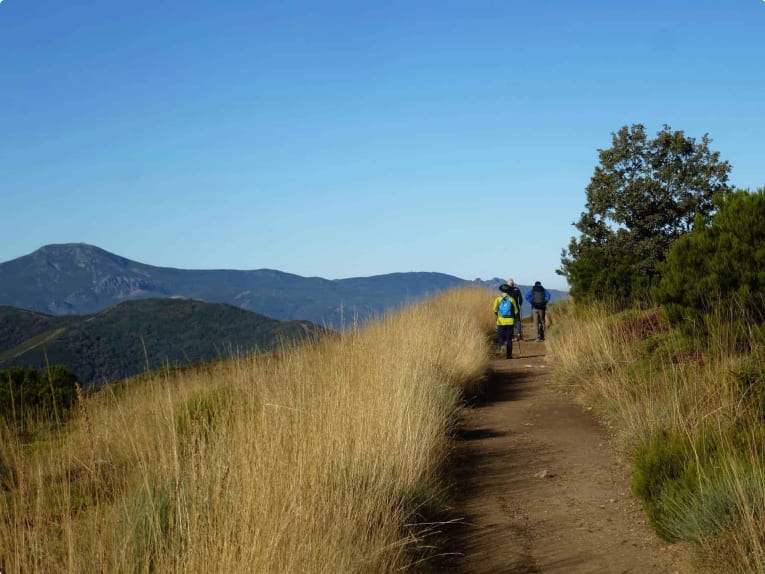
If you take medication, be sure to bring more than enough for the length of the trip. And, if you wear eyeglasses, it can be a good idea to take a backup pair, along with a cleaning cloth and lens cleaner.
9. Blister Prevention
Even with the best shoes and socks, blisters can still be a problem, especially if you’re walking long distances for days in a row. In order to try to avoid them, you can put a moleskin bandage or some talcum powder on areas that are particularly prone to being rubbed against by your shoe. Make sure you don’t have anything trapped in your shoes! If you feel a pebble or bit of debris, take the time to get it out immediately before it does any damage. Also, any fitness preparation you do before a walking tour will contribute to preventing blisters, as it should get your feet more used to moving around, and will help build resilience.
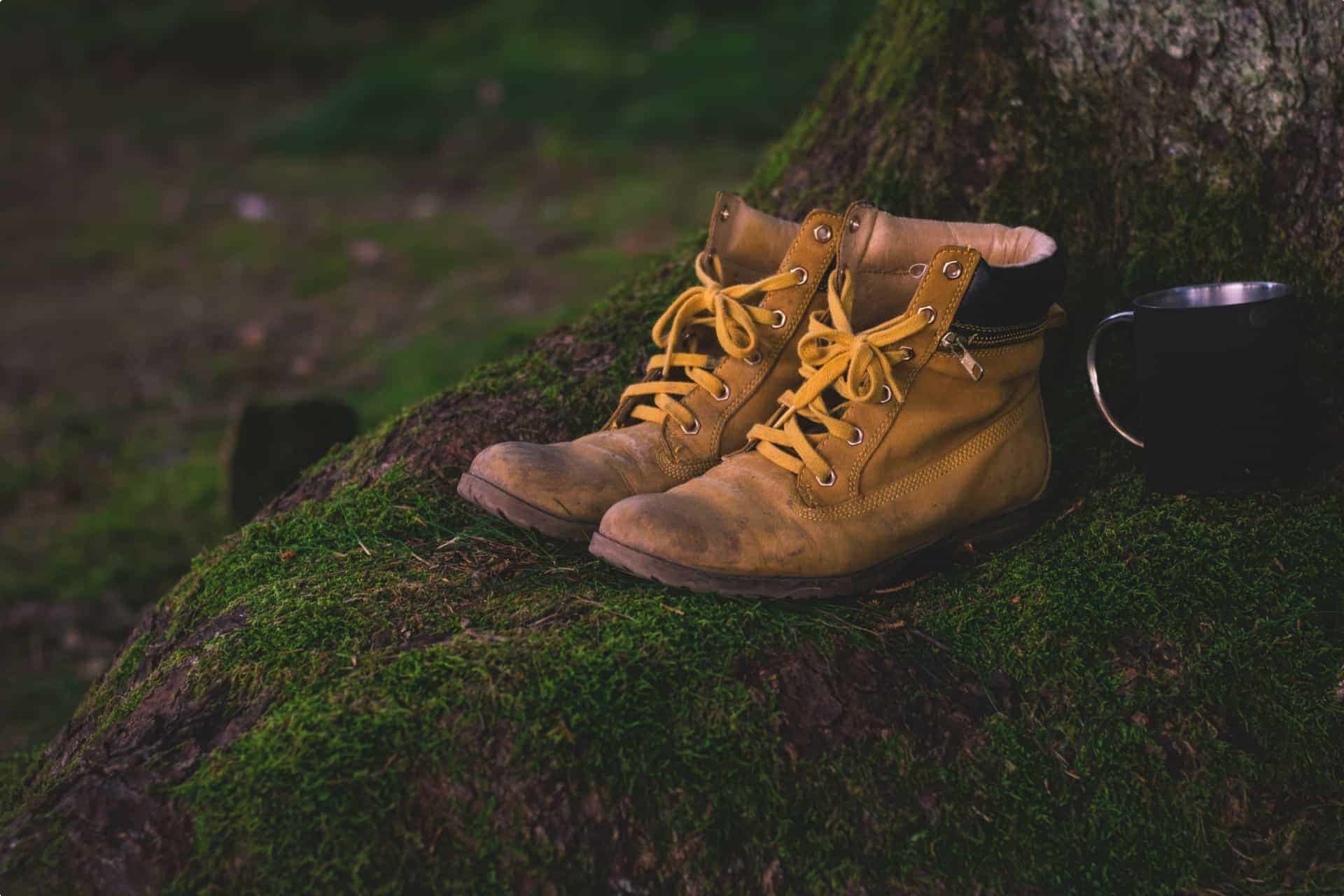
If you do get a blister, you can apply the bandage or talcum powder (it’s always worth carrying each of these in your pack). Having some disinfecting ointment on hand is also worthwhile, to ensure a blister doesn’t get infected.
10. General Safety
While it’s always necessary to take precautions and expect the unexpected when setting out on a long walk, safety requirements will vary wildly from trip to trip, depending on everything from the weather, to the length of the walk, the terrain, and how populated the walking track is. One essential requirement is research. If you can, speak with people who’ve completed the walk before, take the opportunity because you’ll never quite understand the particular challenges of any walk until you’ve experienced it.
It’s also important to plan for contingencies, even if they’re unlikely. Discuss with your group what you’ll do in the case of becoming separated. It’s worthwhile having a compass, GPS, and whistle on hand for these situations, just in case. If you are bringing these items, ensure that you’ve tested them out beforehand. The last thing you want is to discover you need your emergency gear, only to realise that it doesn’t work properly.
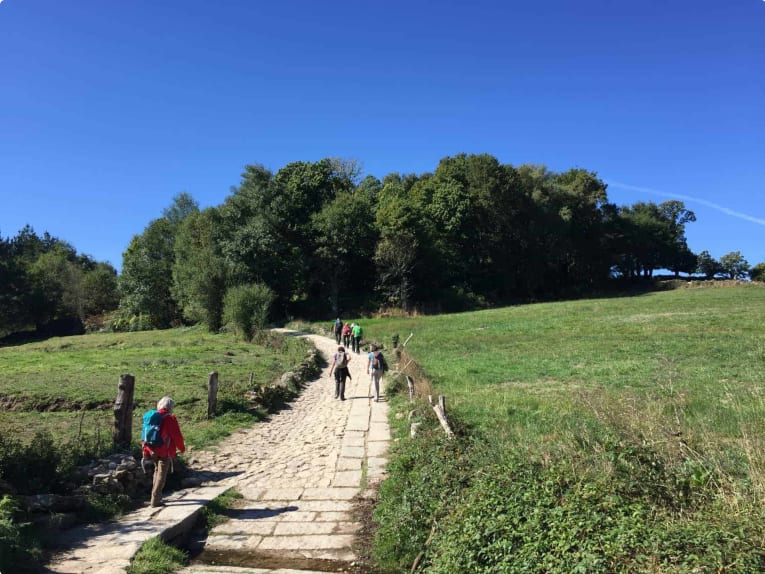
Another handy tool that’s worth bringing along on a walk: the trusted Swiss Army knife. Just remember not to store it in your carry-on luggage if your journey involves a flight! It’s also worthwhile having some basic disinfectant, some crepe bandage, and band-aids.
Brain Health Benefits of Walking for Seniors
Walking more not only enhances basic physical fitness and mobility, but also plays a vital role in maintaining optimal brain health for those over the age 50. A recent study by Dr. Agnieszka Burzynska from the Colorado State University indicates that it can freshen and renovate the white matter in our brains, potentially improving our ability to think and remember as we age.
White matter is essentially the brain’s wiring – the tissue that connects neurons via nerve fibers – and is essential for brain health. It can be fragile though, thinning and developing small lesions as we age. These dilapidations in turn can be the precursors of cognitive decline.
According to Burzynska’s study, however, white matter can refashion itself late in adulthood, especially if people begin to move. Both improvements in memory skills and renewed white matter were shown amongst a group of regular walkers over six months. In contrast, members of the control group, who had not exercised aerobically, showed declining white matter health after the six months. The findings tell us that a few brisk walks per week is all it takes to keep your white matter healthy and your memory sharp.
Odyssey Small Group Walking Tours for 2020 & beyond
Odyssey offers a wide range of walking tours all over the world (along with an even wider range of other types of tours). If you think taking a walk sounds like an excellent. We go to Japan, Georgia, Britain, France, and beyond. Odyssey’s walking tours for 2018 include a walking tour of the Berlin Wall, the Loire Valley, Standing stones through to Stonehenge and Kenya’s rift valley. These small group escorted walking tours are in addition to the usual small groups of between 6 to 12 participants offered each year on your favourite walking tours. You can look through Odyssey’s walking tours by clicking this link!
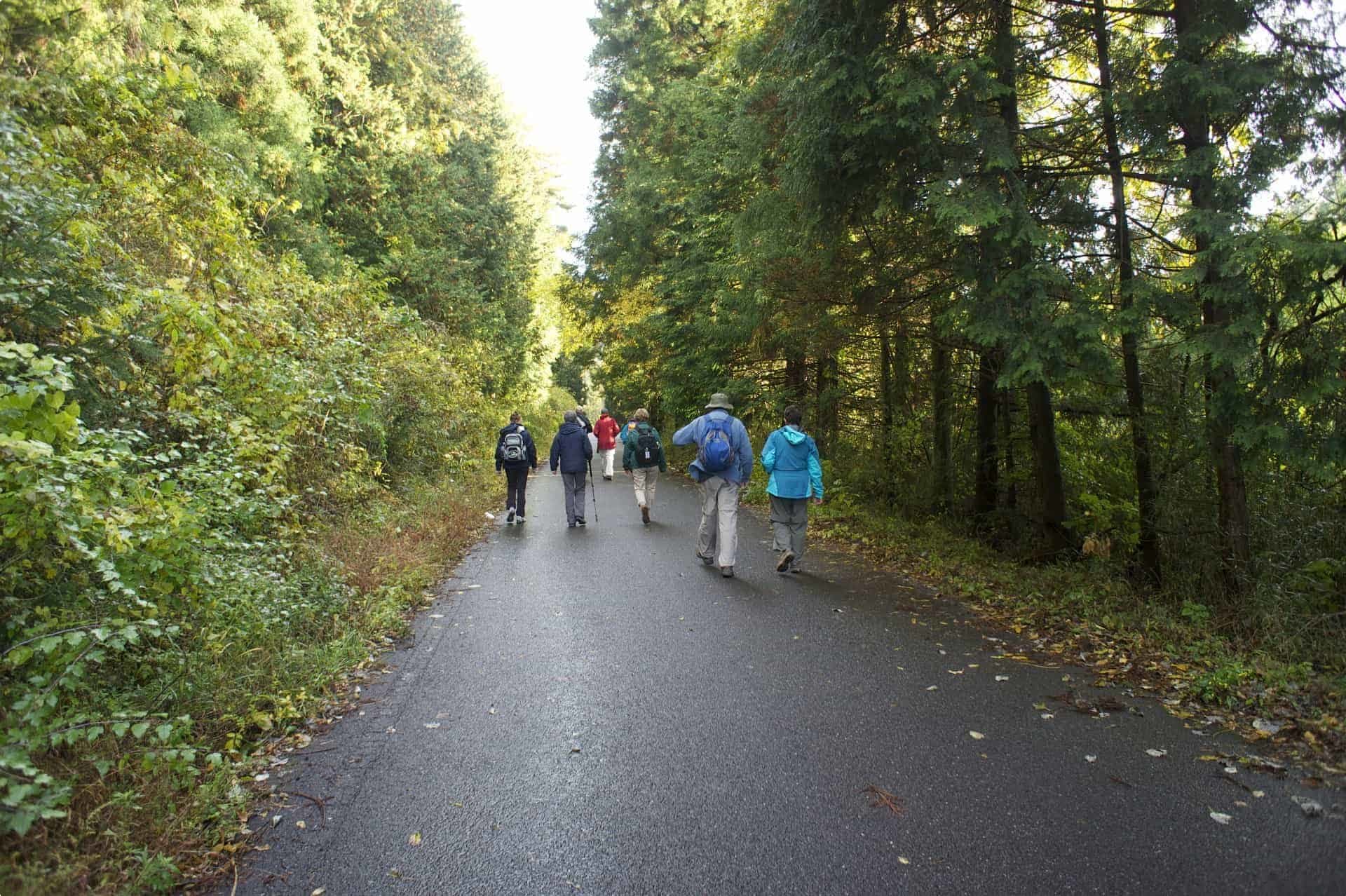
This list of articles may also assist you with your trip planning;
- Mature Travellers footwear & Clothing
- Pilgrimages of the World
- Walking tours – tips for seniors
- Travel tips for Seniors part I
- Travel tips for Seniors part II
About Odyssey traveller; small group educational tours for seniors & mature travellers.
Odyssey Traveller is a not-for-profit organisation offering Australia and New Zealand’s most comprehensive educational tour programs. We provide worldwide experiences for mature travellers who are keen to blend a love of travel with a thirst for knowledge.
Odyssey Traveller is famous for our small groups, and we average eight participants per tour. Our maximum group size is eighteen people, which ensures quality, flexibility and care that is tailored to our clients. We specialise in small group tours for the senior traveller who is seeking adventure or is curious about the world we live in. Typically, our clients begin travelling with us from their mid 50’s onward. Both couples and singles are welcome.
Odyssey Traveller is committed to charitable activities that support the environment and cultural development of Australian and New Zealand communities. Accordingly, we are pleased to announce that since 2012, Odyssey has been awarding $10,000 Equity & Merit Cash Scholarships each year. We award the scholarships based on academic performance and demonstrated financial need, and at least one scholarship is awarded per year. We are supported through our educational travel programs, and your support helps Odyssey achieve its goals.
For more information on Odyssey Traveller and our educational small group tours, visit our website. Alternatively, please call or send an email. We’d love to hear from you!
Updated January 2021
Updated July 2021
